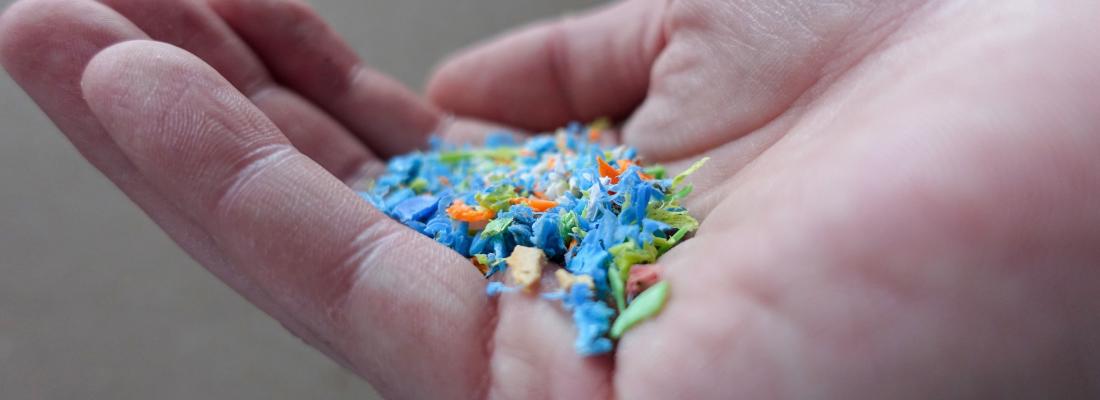Food, Global Health Reading time 2 min
When microplastics sit at the microbiota table
Published on 06 October 2022

Plastics were developed in the 20th century and revolutionised the everyday lives of millions of families. But their massive production over the past 50 years has led to a critical environmental pollution.
Plastics may break down into tiny particles known as microplastics. These particles are found throughout the environment, including the food chain,which means we end up eating them. But what impact do they have on our digestive system?
To address this question, scientists from INRAE and the University of Clermont Auvergne used an original in vitro model that reproduces the environment of the human colon, the final part of the digestive tract. They studied what happens to the most widely produced plastic in the world today, polyethylene (PE). The researchers investigated the possible interactions of PE microplastics with the digestive ecosystem, including gut microbiota and gut barrier.1
Clear findings were assessed: PE microplastics altered the gut microbiota in vitro. The effects varied depending on the individual, but a common trend emerged. The scientists noted an increase in potentially harmful bacteria and a reduction in beneficial bacteria. However, these changes did not affect the gut barrier integrity, which maintained its protective function and showed no inflammation.
These initial findings offer novel information that is crucial for understanding how exposure to microplastics impact human intestinal health. This knowledge can help scientists better evaluate the health hazards and risks related to plastics and microplastics.
Polyethylene: from saviour to enemy
The world’s most common plastic material is polyethylene, which is cheap and easy to process. On average, 100 million tons are produced every year, with half being used for packaging, such as plastic shopping bags. Polyethylene is a petroleum-based product that takes between 100 and 400 years to degrade naturally.
1The gut barrier comprises the epithelium (the skin that lines the intestine) and the mucus, which plays a key role in the protective function of the intestinal mucosa.
Reference
Elora Fournier, Mathilde Leveque, Philippe Ruiz, Jeremy Ratel, Claude Durif, Sandrine Chalancon, Frederic Amiard, Mathieu Edely, Valerie Bezirard, Eric Gaultier, Bruno Lamas, Eric Houdeau, Fabienne Lagarde, Erwan Engel, Lucie Etienne-Mesmin, Stéphanie Blanquet-Diot, Muriel Mercier-Bonin, Microplastics: What happens in the human digestive tract? First evidences in adults using in vitro gut models, Journal of Hazardous Materials 442 (2023) 130010, https://doi.org/10.1016/j.jhazmat.2022.130010
